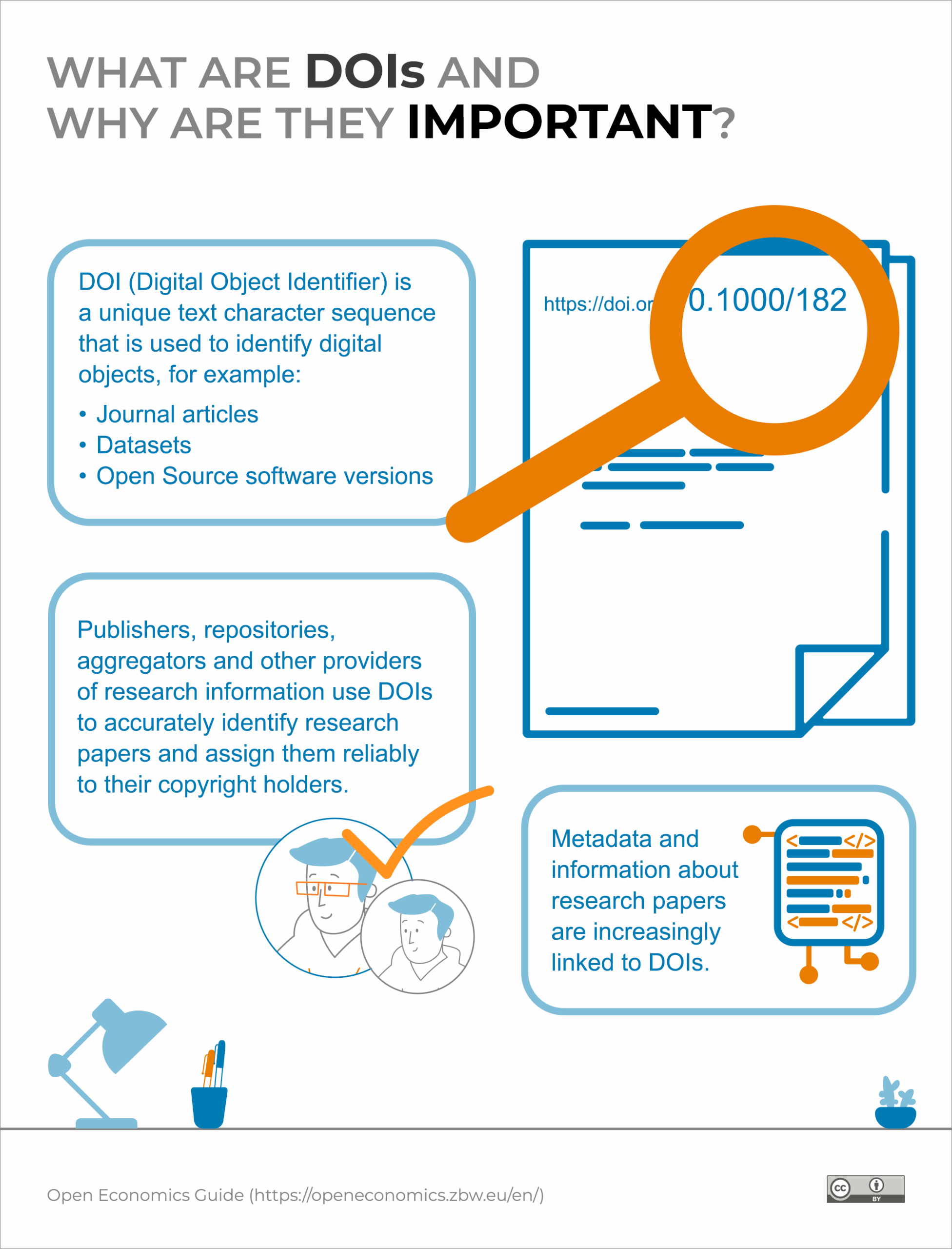Why DOIs are Important and Where They are Assigned
A DOI (digital object identifier) is a unique text character sequence that is used to identify digital objects, for example for journal articles, datasets or open source software versions. It is a type of persistent identifier (PID). DOIs also offer a permanent link to specific content and its storage location on the internet.
DOIs are important because they increase the reach and the impact of your research work. Publishers, repositories, aggregators and other providers of research information use DOIs to identify research work precisely. Thanks to DOIs, research work can in turn be assigned more reliably to their copyright holders. Furthermore, metadata and information about individual research work are increasingly linked with DOIs. The video “The DOI for Data” explains the significance of DOIs for research data.
The DOI is used above all for publications in publication contexts and for scientific specialist journals. In order to receive a DOI, the publisher with whom you publish must be a member of a DOI organisation. But other institutions can assign DOIs too, for example:
- You receive a DOI for content that you upload to the Open Science Framework. You can read about how this functions in the worksheet “Make your own data sustainable and transparent”.
- Publications on Zenodo also quickly and easily receive a citable DOI free of charge.
- For research data, you can receive a DOI when it is published on SoWiDataNet|datorium.
